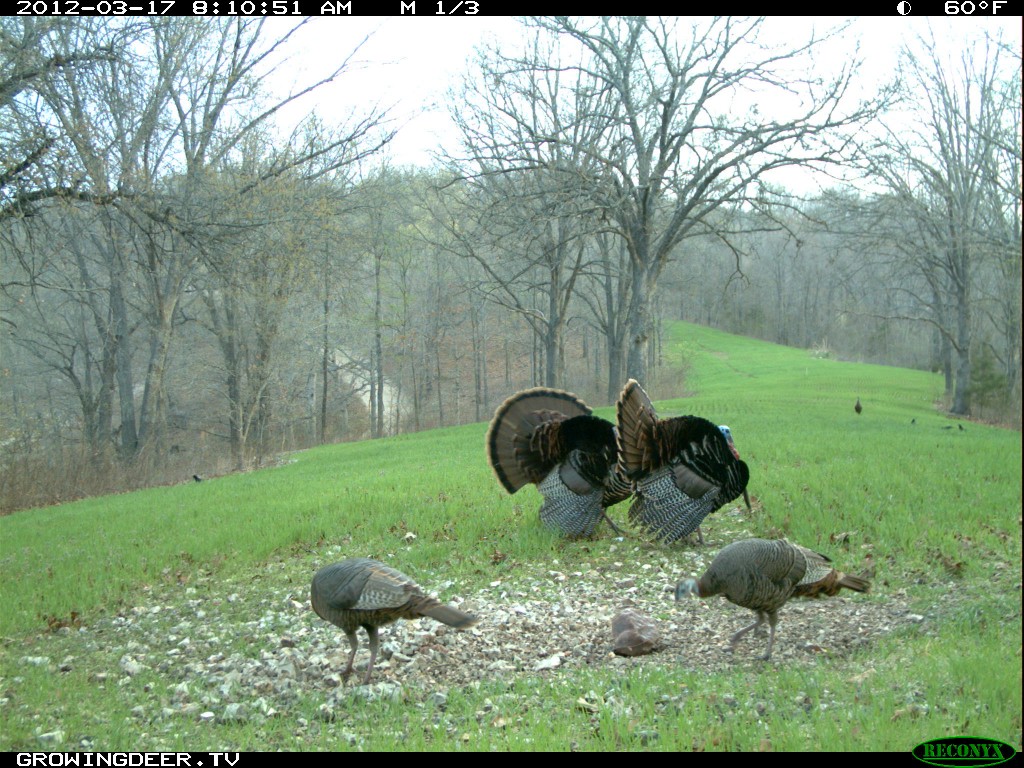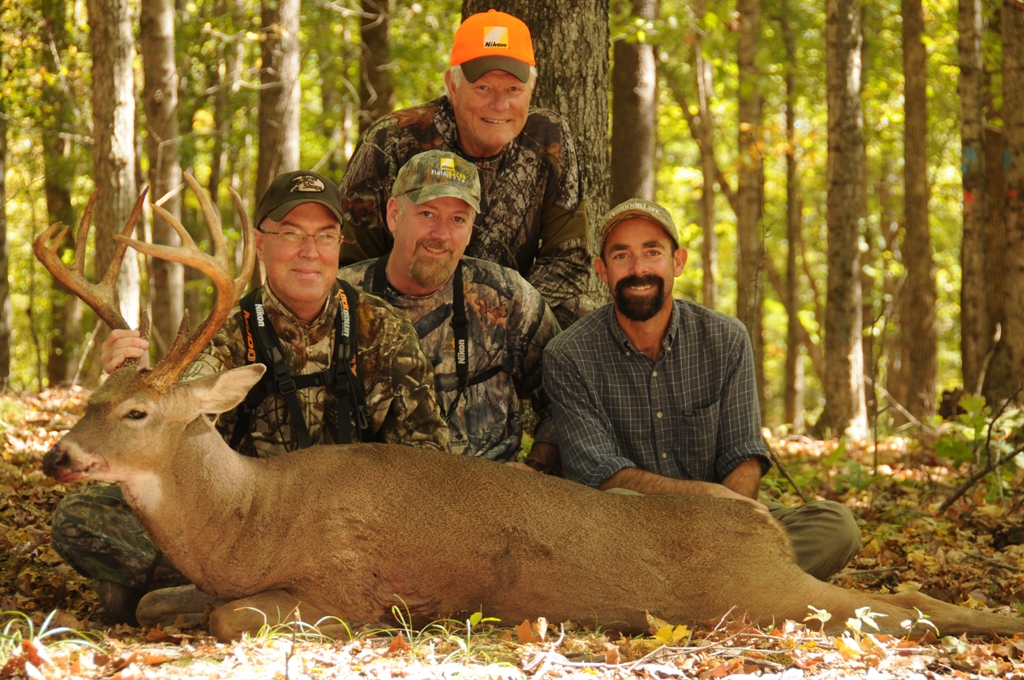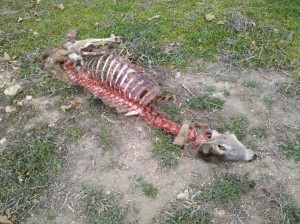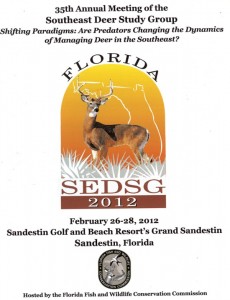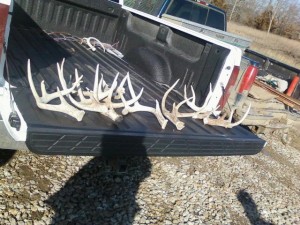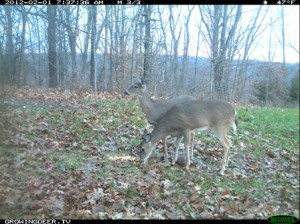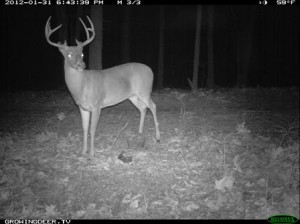Part 6: Flat Ground
I’ve been discussing how to manage land to produce mature and huntable bucks. It’s relatively easy to produce mature bucks. Simply don’t harvest them until they are 4+ years of age. I define mature for whitetail bucks as being four years old or older because by that age most bucks have expressed 90+% of their antler growth potential.
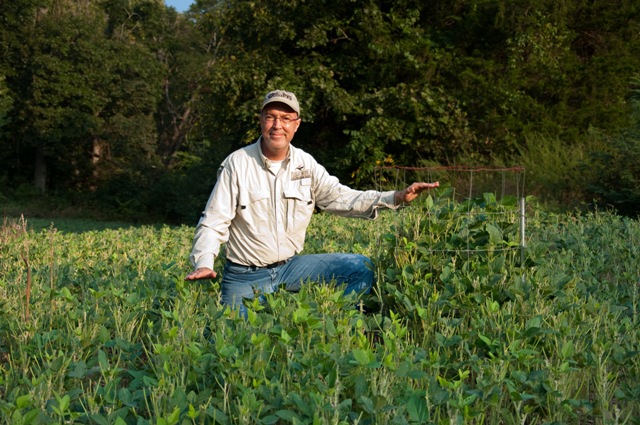
Food plot with a utilization cage
In this blog series I’ve also discussed management strategies which allow bucks to express their antler growth potential. Just because a buck is allowed to live until he is 4+ years of age doesn’t mean he will produce antlers to his full genetic potential. If he hasn’t had access to a quality diet throughout his life and experienced minimal stress, he will not produce antlers as large as his genetic potential.
Now that we discussed several aspects of managing deer so they can express their full genetic potential, I’d like to discuss how to harvest mature bucks. Last week I shared that I’d found several sheds in bottlenecks or pinch points while laying out a habitat management plan on a property in central Missouri.
I really enjoy finding sheds. However, finding where a mature buck has been is not the same as being where a mature buck is – within shooting range! Predicting where a mature buck will be during daylight hours and being there at the same time – especially accomplishing this on a year after year basis – requires a lot of skill and preparation.
Wonder why so many whitetail hunters go to areas that produce commercial row crops year after year? If you look at a map of the whitetail’s range, the portion of the area that produces commercial row crops is a relatively small portion of the whitetails range. Yet, the majority of Boone and Crocket and Pope and Young entries come from the areas where commercial crops are produced.
There are two simple reasons and they both relate to flat ground. Flat ground – especially in the Midwest is almost always better quality soil compared to where the topography is steep and the topsoil has been eroded. However, years and years of producing and harvesting commercial crops have significantly reduced the amount of nutrients and beneficial bacteria in the soil. Without adding fertilizer and beneficial microbes back to the soil, it would not be nearly as productive. These elements are rarely added back to the soil unless it is commercially farmed. Hence they are rarely applied to areas with steep topography.
My property, The Proving Grounds, is a perfect example. It has very steep terrain and was extremely eroded from exceedingly poor timber harvest and agricultural practices decades ago. There literally was no topsoil only rock – literally – only rock. I never disk a plot at my place because it would only shuffle rocks around and cause erosion of the limited amount of organic matter that is present.
However, by adding poultry litter that has been composted with beneficial, soil building bacteria added (Antler Dirt) I’ve significantly improved the quality of crops produced in my food plots. I can now grow quality crops, even on the rocky soil where I never disk! Remember that quality forage and grain crops are only nutrient transfer agents. They serve to transfer nutrients from the soil and air (air is roughly 78% nitrogen – capture that and never pay for nitrogen again!) and transfer those nutrients to deer and other plant consumers.
Some plants are better at capturing nutrients and transferring to consumers (deer, cattle, humans) than others. Those plants typically are the crops grown in commercial ag – to feed humans (and deer). Oak trees transfer nutrients – but the vast majority of the nutrients they transfer are tied up in the wood or the structure of the tree.
Soybeans also transfer nutrients but a much higher percentage of the nutrients they transfer from the soil and air are deposited in the soybean leaves and eventually the soybean pods. Deer readily consume soybean leaves and pods. Deer rarely consume the trunks of oak trees – and never express their full antler growth potential when oak leaves and acorns are most of their diet. This is a primary reason bucks of the same age class living where soybeans are commonly grown will have larger antlers compared to bucks living in areas that are primarily forested.
Some of you are already yelling “acorns.” Acorns are much lower in nutrient content than soybean leaves or pods – there is no comparison between the nutritional quality of acorns and soybeans – or the antlers produced by bucks that primarily consume either crop.
So, if you want to hunt mature deer that have expressed most of their antler growth potential, you need to hunt where the soil has plenty of nutrients and plants that efficiently transfer those nutrients from the soil and air to deer. This can be in regions were commercial crops are grown (flat land), or where quality food plots are maintained.
For example, there isn’t a commercial soybean or corn field for many miles from my property (The Proving Grounds). However, over the years, I’ve converted the few flat spots among the hills where I live to well fertilized food plots and usually plant Eagle Seed forage soybeans. The results have been more than pleasing! My family and I have been blessed to produce and harvest several large, mature bucks.
If your objective is to harvest mature bucks with large antlers, you can go to flat, crop producing ground, or grow the same crops where you hunt. Big antlers start in the dirt – and it usually requires well fertilized flat dirt to grow good nutrient transfer agents (crops like soybeans) to allow bucks to produce their best antlers!
There is another HUGE advantage to managing and hunting deer where the land is flat. I’ll discuss that next week.
Growing Deer together,
Grant



